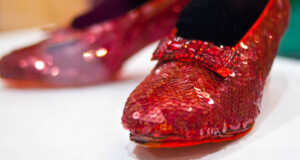US National Highway Traffic Safety Administration Is Now Allowing Adaptive Headlights On The Road
Ever since moving abroad, one of the things I miss most about the US is my car. I would love to have a car again, simply for the fact that I miss driving. I miss the freedom I had to go on a little mini-adventure if I wanted.
My favorite time of day to go for a drive was at night. Being a California girl, I used to love hitting PCH at dusk right after the sun had set on the horizon.

But as enjoyable as night driving might be to some, it can also be dangerous. Mainly, because it depends on where you are, the darkness can make it hard to see what is on the road ahead of you. Not being able to see certainly affects your reaction time to things.
Adding to the danger is, of course, different weather patterns, as things like snow or sleet or even rain, can affect visibility. However, the U.S. government is making changes in the form of allowing certain headlight technology on vehicles in order to help improve the driving conditions of nighttime in an effort to reduce the risk of crashes.

According to a February 15th announcement by the U.S. National Highway Traffic Safety Administration, the agency is going to allow for cars with adaptive driving beams, or advanced headlights, to be driving within the US. As the agency explained, this change comes as part of an effort to try and reduce the number of traffic accidents that occur at night.
The NHTSA’s Deputy Administrator, Steven Cliff, stated, “NHTSA prioritizes the safety of everyone on our nation’s roads, whether they are inside or outside a vehicle. New technologies can help advance that mission.”

Cliff added, “NHTSA is issuing this final rule to help improve safety and protect vulnerable road users.”
According to a report by Autoweek, adaptive driving beam headlights, also known as smart headlights, illuminate the road with the brightness of a traditional headlight high beam. However, the difference lies in the beam’s technology, which has specially designed sensors that adjust the brightness and direction of the light automatically based on the surrounding environment.

The NHTSA has shared that this adaptive beam technology is helpful for better distance illumination, and for illuminating pedestrians, objects, or animals in the road – all without having to reduce the visibility of other drivers who may experience momentary blindness because of someone else’s high beams.
It sounds like a win-win on both sides of the road! What do you think of this new technology? Does your car have smart beams? Let us know!













